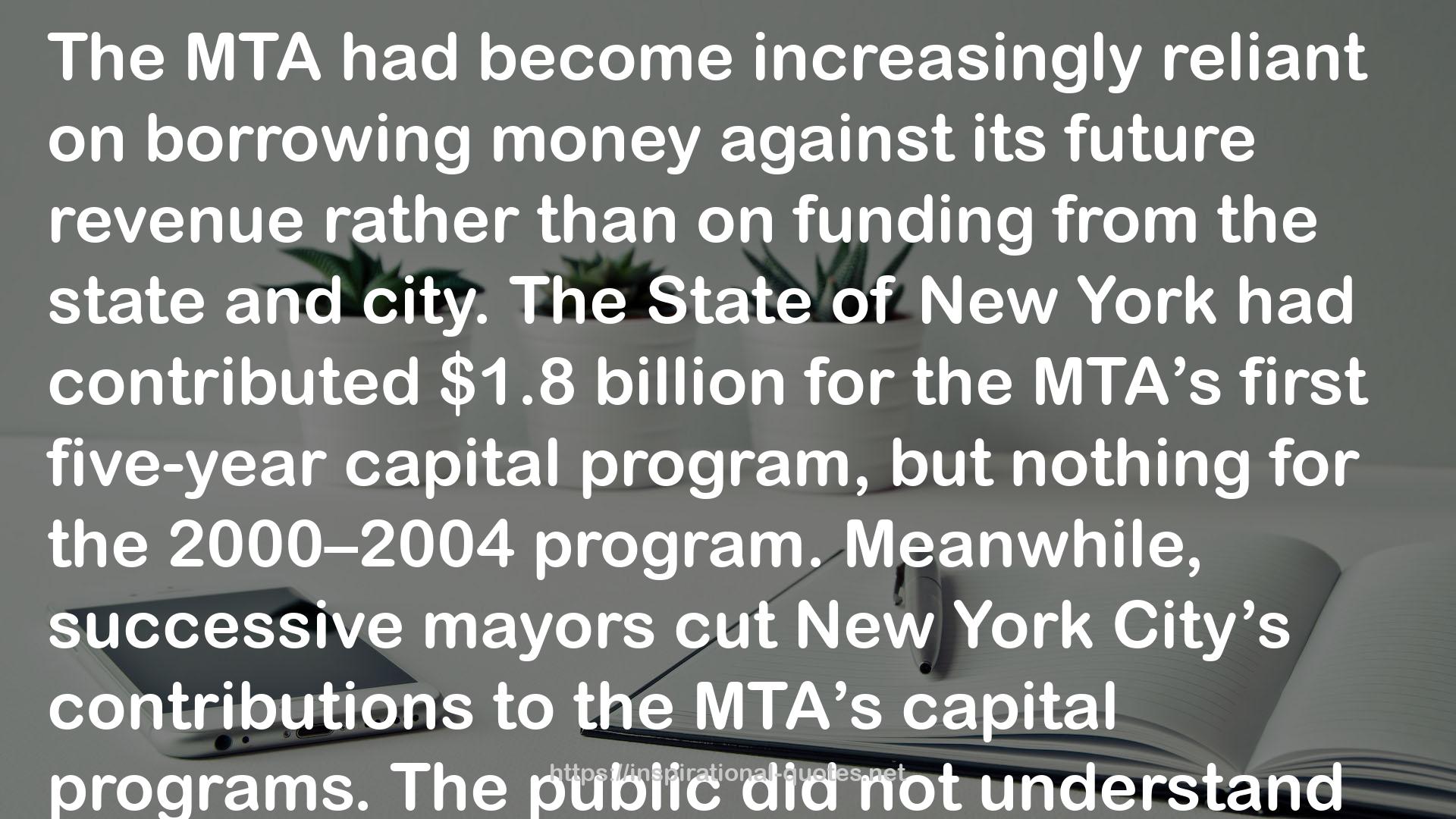" The MTA had become increasingly reliant on borrowing money against its future revenue rather than on funding from the state and city. The State of New York had contributed $1.8 billion for the MTA’s first five-year capital program, but nothing for the 2000–2004 program. Meanwhile, successive mayors cut New York City’s contributions to the MTA’s capital programs. The public did not understand the MTA’s predicament. A citywide survey indicated that most New Yorkers thought the MTA earned a profit on its subway service. In fact, subway riders paid only 44 percent of the authority’s operating costs, with taxes and tolls making up the rest. In 2004, the fastest-growing portion of the MTA’s budget was the interest expenses on its debt. The MTA’s outstanding debt had skyrocketed from $9 billion in the early 1990s to nearly $20 billion by 2004, and its annual interest payments were over $800 million.95 "
― , Last Subway: The Long Wait for the Next Train in New York City
